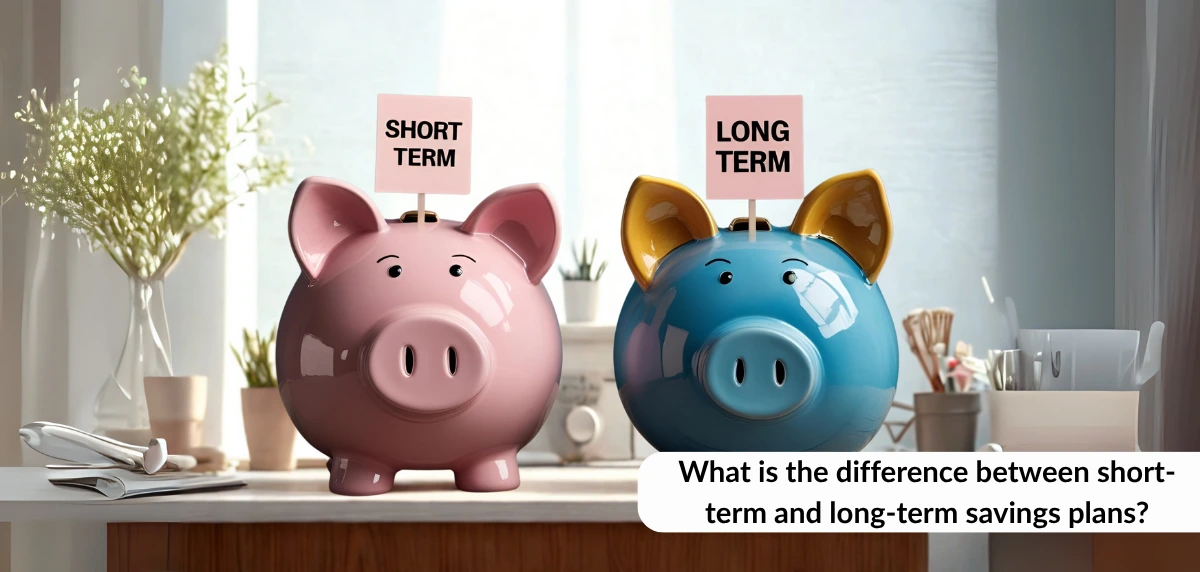Saving money is a smart habit that helps you meet future goals, whether big or small. Whether your goal is a vacation next year or your child’s college fees ten years from now, choosing the right savings plan matters. However, not all savings plans are the same. Some are designed for quick access and short-term goals, while other types of savings plans focus on long-term financial growth.
Understanding the difference between short-term and long-term savings plans can help you make better financial decisions that align with your needs and goals.
Short-Term Savings Plans and Their Features
Short-term savings plans are designed for goals that you aim to achieve within one to five years. This type of savings plan offers quick access to funds and is ideal for emergencies, planned purchases, or short-term goals, such as a vacation, minor home renovation, or creating a rainy-day fund.
Features of Short-Term Savings Plans
Tenure:
Usually under 5 years.
Returns:
Lower but stable returns.
Liquidity:
High; you can access funds easily without heavy penalties.
Risk:
Low risk.
Examples: Recurring deposits, short-term fixed deposits, liquid mutual funds, and money market instruments.
A short-term savings plan can be great for protecting your capital. They may not offer high returns, but they can ensure your money is safe and accessible.
Long-Term Savings Plans and Their Features
Now that you know what savings plans are for the short-term, let’s look at their long-term counterparts.
Long-term savings plans are meant for goals that take several years or even decades to reach. These can include buying a home, funding your child’s higher education, or planning for retirement. These plans can help build wealth gradually over time.
Features of Long-Term Savings Plans
Tenure:
Over 5 years; often 10–20 years or more.
Returns:
Potential for higher returns due to compounding and market-linked growth.
Liquidity:
Low; may have lock-in periods or exit charges.
Risk:
May include market risks (depending on the product, e.g., mutual funds or ULIPs).
Examples:
Public Provident Fund (PPF), National Pension System (NPS), Unit Linked Insurance Plans (ULIPs), long-term mutual funds.
These plans are ideal for investors who want to start saving early to maximise returns. By giving your money more time to grow, you can create a solid financial cushion to support your long-term dreams.
How to Choose the Right Savings Plan for Your Needs?
Here are some things to consider when looking at short-term vs long-term savings plans.
Define Your Goal
Are you saving for a short-term purchase or a long-term life goal? Short-term needs require accessible, low-risk instruments. Long-term goals need growth-oriented plans.
Know Your Time Horizon
If you will need the money soon, go for a short-term option. For goals that are years away, a long-term savings plan offers better rewards.
Understand Your Risk Appetite
Short-term savings plans carry minimal risk, while long-term plans may involve higher risk but greater potential returns.
Balance Your Portfolio
You can use a mix of both types of savings plans. For example, you can put some money in a recurring deposit for emergencies and invest the rest in a PPF or ULIP for long-term wealth.
In short, ask yourself:
- Do I need this money within 2–3 years?
- Can I lock the money for 10+ years?
- Do I need stable returns, or am I comfortable with some risk?
By comparing the options between short-term and long-term savings plans based on the above factors, you can create a flexible and goal-oriented financial plan. Regardless of which options you choose, it is best to start saving early to maximise your returns.
Whether you are saving for the next year or the next decade, pitting short-term vs long-term savings plans is important for successful financial planning. Short-term plans offer safety and liquidity, while long-term ones focus on growth and helping you achieve your goal. Explore the many types of savings plans, align them with your needs, and make sure to research the right strategies to boost your savings.





















